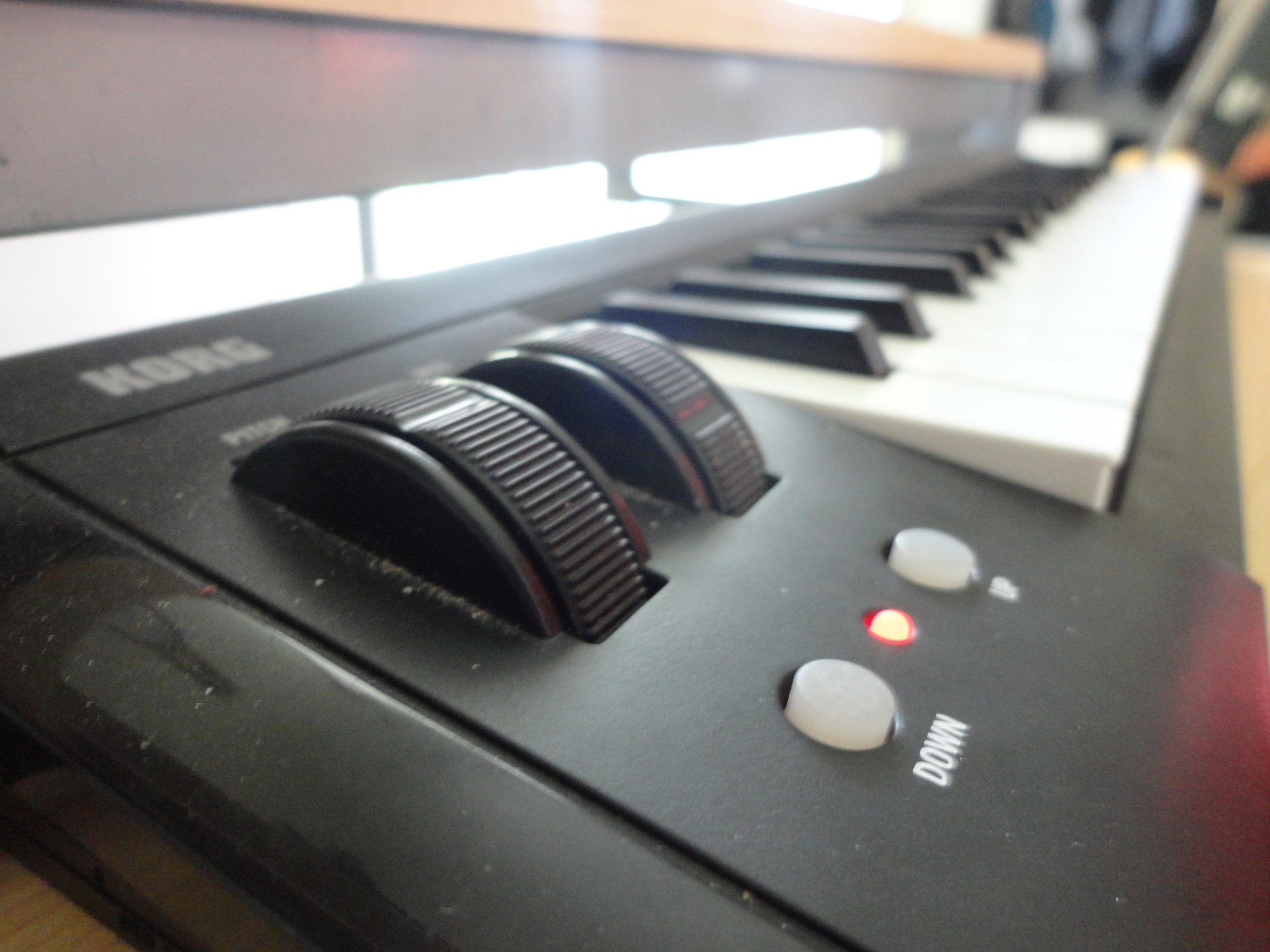-
Posts
6,165 -
Joined
-
Last visited
-
Days Won
53
Content Type
Profiles
Forums
8Tracks
Articles
Events
Blogs
Everything posted by timaeus222
-

finished Lufia 2 - Sinistral Salvation (Master Mi Remix)
timaeus222 replied to Master Mi's topic in Post Your Game ReMixes!
You can checkbox Remember Me and/or just make a new post in the old topic. -

finished Lufia 2 - Sinistral Salvation (Master Mi Remix)
timaeus222 replied to Master Mi's topic in Post Your Game ReMixes!
You can ask a mod to do so, but you could have updated the original topic. -

finished Lufia 2 - Sinistral Salvation (Master Mi Remix)
timaeus222 replied to Master Mi's topic in Post Your Game ReMixes!
Please don't make a separate topic for the same song to gather attention. Read the sticky. -
Happy birthday!
-
Hey Darke, I dunno if you have sub woofers, but can you check and see if the subs are alright on my mix? It's the only thing I'm concerned about right now with regards to this mix. I can't check that myself until Sunday night, which is obviously past Nov. 30.
-
Done, named, submitted, and PMed.
-
Almost done with mine! This is gonna be ridiculous.
-
Happy birthday bro!
-

wip World 8-8 : A Remix Of The Airship Theme
timaeus222 replied to oMarko's topic in Post Your Game ReMixes!
I heard the AKG K240 are great, while I'd recommend the Grado SR-60i. The AKGs are normally $160 and are on sale now for $88. The Grados are $80. I don't know what the AKGs sound like, but the Grados have crisp bass and clear treble. Personally, I feel like the Grados are more balanced once I look at the frequency range comparison (8dB is a lot, 4dB isn't too bad of an overboost). You may want to also get a headphone amp to widen the frequency range of your headphones (last I heard, frequency adjustment knobs on headphone amps adjust the threshold of the frequencies outputted to your headphones, which should give an honest result for you to hear). http://musicgearforall.com/ =393&graphID[]=2611&scale=30"]Frequency Range Comparison -

wip DKC2 Forest Interlude / Web Woods remix
timaeus222 replied to CC Ricers's topic in Post Your Game ReMixes!
I'm gonna add to this. *1 --- Be careful when you say to use compressors on everything. I used to do that way too much, and it sounded pretty bad. However, it was back when I knew nothing about compressors other than the fact that they push down loudness (like a year ago, before the month that I considered my "turning point"). When you use compressors, remember to do a strict before-and-after comparison. Either you have an A/B function in your compressor, or you can switch the compressor on/off and compare like that. If it truly sounds better to you, then of course keep it. If it doesn't sound quite right and you don't know why, try looking for examples of what you were aiming to accomplish. *2 --- I do this notching/boosting with my kicks/basses, and I personally think it's a great idea. Also, signal chains will certainly make a difference in how things sound, depending on the elements in the chain. For example, compression after reverb is different from reverb after compression. Generally speaking, reverb after compression sounds more natural. If you compress a reverbed sound, it'll be more obvious since the reverb tail will be affected too. On the other hand, if you reverb a compressed sound, it'll simply sound nice and big, depending on the tones you use for the instrument or reverb. *3 --- Absolutely. Drops like those are such fun to do. Two examples: My Metroid ReMix with AngelCityOutlaw (1:22) (2:04) -

OCR02788 - Sonic CD (JP) "Two Futures"
timaeus222 replied to Liontamer's topic in ReMix Reviews & Comments
3:51 has a really nice atmosphere. I kinda wish more of that was in this, but regardless, a pretty enjoyable track. -

OCR02786 - Sonic CD (JP) "WhACKASS WORKShIFTS"
timaeus222 replied to Liontamer's topic in ReMix Reviews & Comments
Best track on this album, hands down. Also, I predicted the last few seconds correctly! <3 lol @ the h's being lowercase. HALC TRIBUTE! -
I want to claim Bio Hazard ~ Snatcher. I've been writing some nuanced dissonant music lately, so I'm feeling up to the challenge with this one. It'll be horror-like, probably with some industrial and atonal percussion, granular synthesis, FM bass (of course), creepy guitars, and pseudo-bells. Examples of my work are on my website in Audio Reels. The intro to my Gunstar Heroes ReMix is an example of possible granular synthesis, and something that accurately represents my vision of this track is this.
-
Nah, average as in common. The average listener = the common listener = the general audience. i.e. Casual listeners---for enjoyment, for fun, etc. It's just an estimation/guess (mostly a guess) at how people *may* be perceiving music these days---arrangement first then production second or so. Arrangement is the easier aspect to connect with for more people, IMO, as it's more accessible to the casual listener ("does it work?", "does it sound weird?", etc.). Production is more of... an acquired taste. If you try listening to Stravinsky's "Rite of Spring", it's a given that it's really strange in structure and melodic content, but the production could be liked by some and not liked by others.Also, Darke, we're just playing around as you know, and I personally am not trying to sway the votes either way actually. Just... adding info to try to make it easier to decide, especially because apparently Kristina's and my entries are more borderline than we each originally thought, at least from what I've gathered with recent votes.
-

Mega Man: The Wily Castle Remix Gauntlet 2013
timaeus222 replied to DarkeSword's topic in Competitions
I forget if I even said this yet, but with all of Cosmic Sounds' entries, I was carrying out his arrangements and doing the production as well because he had some sort of troubles (that he didn't even tell me about, so I dunno what they were) and didn't have access to his computer or somethin'. So the orchestral entries gave me a good amount of orchestral experience. Yay. -

wip DKC2 Forest Interlude / Web Woods remix
timaeus222 replied to CC Ricers's topic in Post Your Game ReMixes!
You analyze waveforms too? WAVEFORM BUDDIES! Seriously though, that's a sign of a perfectionist mentality. Compression on your track, meaning... Master track compression, if I'm understanding you correctly. That should be done last to make your edits accurate to the pre-compression mixdown. If that's what you did, it'd help to turn it off and mix while it's off. If you ease off on the compression enough so that you don't get overcompression, I'm assuming you mean the mix won't easily peak near -0.2dB or so like you want due to the hard knee limiter you use. My suggestion is that you try looking for a soft knee limiter you could like, and see if that changes your perspective of hard vs. soft knee. Personally I love soft knee because the only drawback to using it is if things are too loud, there's overcrowding, but never overcompression. From what I've done with it, it seems to function like a very tolerant soft clipper. You'd have to try really hard to clip with a soft knee limiter, but you'd still have to realize when the mix overall is louder than 0dB. Instead of overcompression, the thing to look for while using soft knee would be loss of transients due to overcrowding. However, if you're the type of person I think you are, this may be a good fit. We both look at waveforms, and I would have suggested you look at waveforms anyway if I were to give the suggestion to try a soft knee limiter. -
When you guys make decisions between Kristina's and my tracks, please consider both arrangement and production carefully. I consider our production values to be rather close (from the general perspective), while arrangement is closer (from the general perspective), hence why the decision turns out to be rather tough. Those criteria are both in the OP too. Personally, I would choose based more on production, as I think the gap there is slightly larger than in arrangement, but I suppose it appears subjective to many people, so I'll just let whatever happens to occur. Honestly, the first thing I learned from these compos is that the general listener's votes are completely unpredictable.
-
Mah mix gon' be L-O-U-D. In a good way of course.
-

OCR02781 - Sonic CD (US) "The Boom (Undeleted)"
timaeus222 replied to Liontamer's topic in ReMix Reviews & Comments
Rabcandy nailed the vocals on this one. This arrangement also felt complete even at this length.

